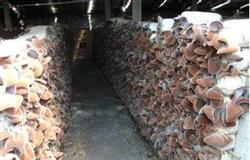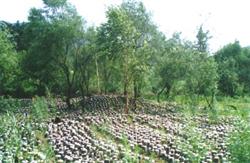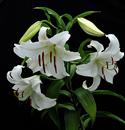Cultivation technique of Auricularia auricula with Rice Straw

The main results are as follows: (1) the quality of rice straw softening treatment is the key to the success or failure of cultivating Auricularia auricula and obtaining high yield. Straw is a kind of loose, easy to accumulate water and not easy to fix material, especially its epidermis, with a layer of wax, this kind of wax paper can prevent mycelium from eating. Through experiments, we have found out three methods of making straw. 1.1 spread the straw on the clean floor and crush it repeatedly with stone to soften. 1.2 soak the long section of rice straw cut into 2-3cm in 3% Mel 4% lime water, remove it after 4 hours, rinse off the residue with clean water and adjust the water content. 1.3 use a feed grinder and install a sieve with a diameter of 2cm to crush it. After crushing, it becomes a strip, thin, loose and soft. 2 Culture material formula the suitable ratio of carbon to nitrogen for the growth and development of Auricularia auricula is 20:1, based on which the formula of culture material is designed as follows: 78% of rice straw, 15% of wheat bran, 2% of plant ash, 2% of calcium superphosphate, 1% of gypsum powder, 1% of brown sugar and 1% of salt. Straw can also be reduced by 15%, adding sawdust to make the culture material more solid and conducive to mycelium growth. The experiment shows that adding a certain amount of plant ash and salt to the culture material of Auricularia auricula and then fermenting the culture material is beneficial to the decomposition of rice straw and the decomposition of silicate in the epidermis of rice straw. it changed the physical properties of rice straw and was beneficial to the mycelium growth of Auricularia auricula. (3) the degree of maturity must be mastered during fermentation. If the fermentation time of the culture material is too long or the fermentation temperature is too high, the yield of Auricularia auricula will be reduced. Therefore, in the process of fermentation, we should pay attention to ventilation, temperature control, turn the pile immediately, that is, the soil steamer on the fashion bag is sterilized. There are many methods of composting fermentation, which can be made by hemispherical or long-shaped composting. Take long-shaped stacking fermentation as an example, the softened straw is mixed into auxiliary materials according to the formula, and then piled into a material pile of unlimited length, 1m in height, 1m in width and unlimited in length, with a slightly compacted beat at the top and around, and a hole is drilled vertically down from the top with a stick passing through 10cm every 30cm or so. After the hole is made, it is covered with plastic film and straw curtain to keep warm and moist, and pressed around. The fermentation time depends on the change of temperature. Generally, when the air temperature is 25 ℃, the material temperature can reach 60 ℃ in about 1 day. When the air temperature is 15 ℃, the feed temperature can reach 60 ℃ in about 1 ℃ in 2 days; when the air temperature is below 10 ℃, it will take more than 2 days. After the material temperature reaches 60 ℃, to uncover the film for ventilation and heat dissipation, cover it with grass curtains during the day, and open it at night, after 10 hours after 6 Murray, you can see steam coming out of the stomata and the production of white actinomycetes (after cutting the profile, the inside of the stack shows an obvious color layer, the thickness of the dark brown layer is about 4cm, the white actinomycetes layer inside is about 20cm, the central layer is brownish red, and the bottom layer is similar to the surface). At this time, to turn the pile, the surface and bottom materials are piled to the middle, and the white and brown layers are piled on the surface and re-piled into the original shape. Generally, the material temperature will reach 60 ℃ in 24 hours after turning. At this time, the film can be ventilated and cooled, so that the material temperature can be maintained at 52 ℃ 60 min. After about 10 hours, a large number of actinomycetes are produced on the surface of the material, and the material in hand is soft, sweet and fragrant, so it can be bagged and sterilized in a steamer. 4 selection of plastic bags and culture materials sterilization plastic bags can choose polyethylene plastic bags with 20-40cm in size and 3-4dmm in thickness. PH9-10 before bagging, while loading while compacting, after loading, gently press the bag face by hand, and immediately restore to moderate tightness after loosening. Then put it in a soil steamer in time, sterilize it in a well shape, keep it at 100 ℃ for about 10 hours, and then let it cool naturally. (5) the selection of wheat seed to cultivate Auricularia auricula has the characteristics of early resurrection, fast growth, dense hyphae, sturdiness and so on. (6) inoculation should be carried out when the feed temperature drops below 30 ℃. Before inoculation, punch a hole from one end to the other with a conical rod that has been sterilized in advance, then put part of the bacteria in the hole, and then pick up some bacteria at both ends. The resistance of Auricularia auricula to Trichoderma viride and Trichoderma koningii is poor. Once infected, the light ones will reduce their production and the heavy ones will fail. In the production process, the method of appropriately increasing the dosage should be taken to increase the contact between the strain and the material, and the general amount of inoculation should be 10%, 15%. (7) after infection control, 5-6 layers of bags were placed on the ground of the culture room to make the hyphae germinate rapidly and inhibit the growth of miscellaneous bacteria. When the hyphae at both ends of the bag grow to 4-6cm, loosen the thread to increase oxygen. The temperature of the culture room was controlled at 23 ℃ 25 min to promote the healthy growth of mycelium. In order to keep each bag at the same temperature, the position of the bag should be changed every 7 days or so. When cultured for 45 days and the hyphae are covered with material bags, spread out the bags and lay them flat. 8 the ear management adopts the two-bag ear management method. The specific operation method is as follows: first, the bacterial bags full of mycelia are moved into the ear chamber and stacked in a single row, with a height of 5 Mel and 8 layers, row spacing 60-70cm, keeping the air relative humidity in the ear chamber at about 90%, and pay attention to ventilation and proper light to stimulate ear rods to form ear bases. After the ear base grows into an ear bud, let the ear bud grow from the hole at both ends as far as possible, and harvest it according to the standard when it is mature. After harvest, under the shade canopy of the forest (requiring good ventilation and convenient drainage), Jianyang border is 1m wide and 30cm is in the shape of tortoise back above the ground. The soil for mulching is required to have good aggregate structure, good water retention and air permeability, and the soil particle size is less than 1cm. Disinfect the surface of the bacterial stick after harvesting the head tide ear with 0.1% potassium permanganate aqueous solution, then cut the bacterial bag with a blade to remove the film, then lay it on the border surface, and then immediately cover with 1-2cm thick wet soil particles, Derrick arch plastic film shed moisturizing. The white hyphae can be seen to extend to the soil after 3 days of mulching, and the ear buds can break out in about 10 days at the temperature suitable for ear emergence. At this time, we should keep the soil wet and dry alternately. When the ear buds break out of the soil, remove the film and spray water to moisturize the ear.
- Prev

Pastoral cultivation of Auricularia auricula
The consumption of cultivation resources of Auricularia auricula is too large, which is disadvantageous to the long-term development, and the per unit yield is low, and the benefit is unstable. Hebei Lincheng edible fungus farm has carried on the exploration of bag material field cultivation, after 3 years finally mastered its cultivation key points, inoculation success rate, ear output and quality have a great breakthrough, tutoring a batch of ears.
- Next

Storage and preservation techniques of lily
Lily originated in East Asia, in Europe and the United States as a flower cultivation, China is harvested bulbs as food crops cultivation. There are not many species of lily pests, but the damage is serious, and the loss rate in serious disease years reaches 30%~60%. In order to control lily diseases and insect pests, we conducted a survey of lily diseases and insect pests in Shaodong area from 1993 to 1998.
Related
- Fuxing push coffee new agricultural production and marketing class: lack of small-scale processing plants
- Jujube rice field leisure farm deep ploughing Yilan for five years to create a space for organic food and play
- Nongyu Farm-A trial of organic papaya for brave women with advanced technology
- Four points for attention in the prevention and control of diseases and insect pests of edible fungi
- How to add nutrient solution to Edible Fungi
- Is there any good way to control edible fungus mites?
- Open Inoculation Technology of Edible Fungi
- Is there any clever way to use fertilizer for edible fungus in winter?
- What agents are used to kill the pathogens of edible fungi in the mushroom shed?
- Rapid drying of Edible Fungi

